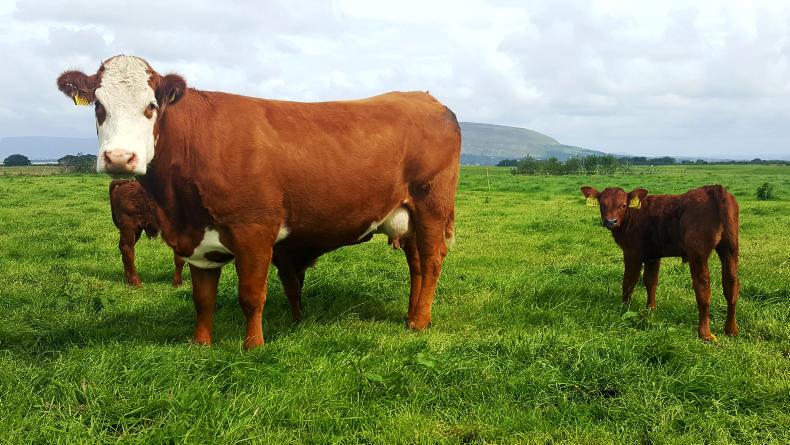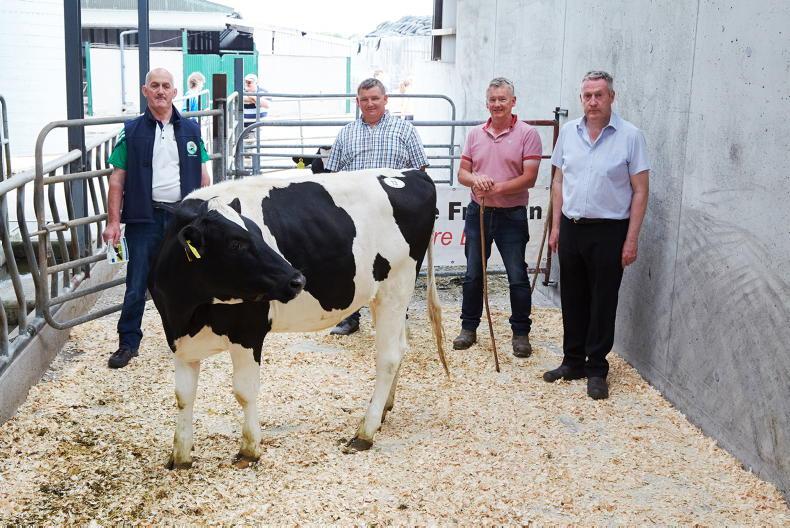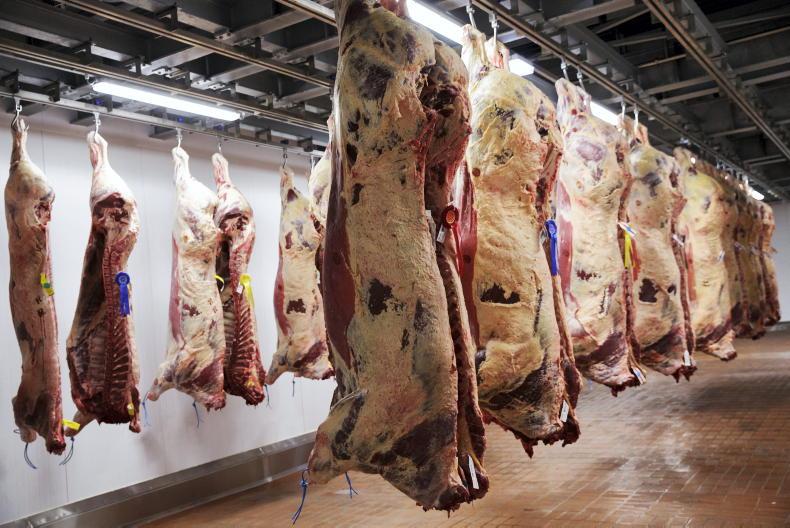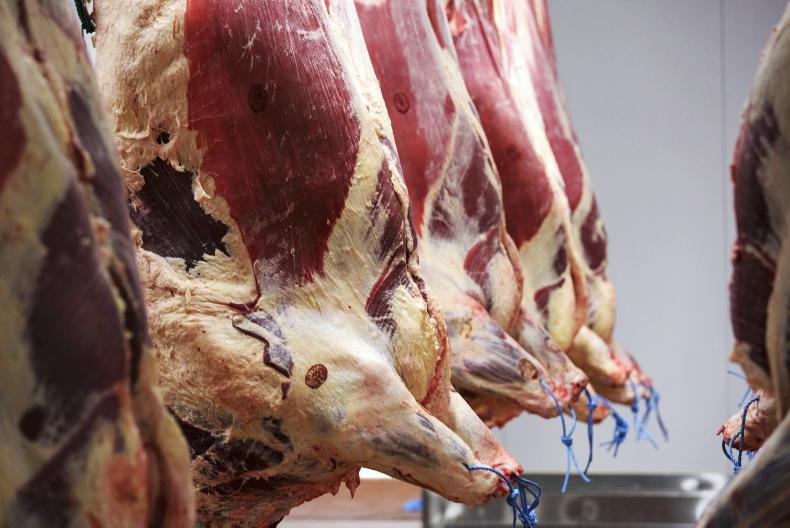Currently standing at 934,273 head, the Irish suckler cow population has fallen by 42,056 cows in 2019, according to the ICBF. It is the fourth consecutive year that the number of suckler cows in Ireland has dropped.
From 2016 to 2019, the national suckler herd has decreased by 83,936 cows. There are fears within the industry that this trend will continue, with many suckler farmers contemplating exiting production after the Beef Data and Genomics programme is finished in 2020.
Some industry commentators have suggested that the national suckler herd could drop as low as 700,000 cows within the next five years.
Speaking at the Teagasc national beef conference in Mayo recently, Teagasc chief economist Kevin Hanarahan said: “We could see suckler cows numbers going back to 1980 levels of 700,000-800,000 cows.”
When asked about targeted supports he said it was possible but unlikely under the current support models.
Suckler cow numbers have been in decline since the end of milk quotas, with the biggest drop seen in counties where the highest number of dairy conversions have taken place.
This has been concentrated mainly in the east of the country, with suckler numbers in some counties along the western seaboard steady.
County by county breakdown
Galway continues to be the county with the highest suckler cow population at 97,732 in 2019. Galway recorded a drop of 3,303 cows between 2018 and 2019 or a 3.27% drop.
Mayo is second in the list, with 72,558 cows in 2019. Suckler cow numbers dropped in Mayo by 2,272 cows in 2019, a 3.06% drop. Taking up the third spot is Clare with 68,374 cows. There are 1,806 fewer cows in Clare in 2019 when compared with 2018, a 2.57% drop. Donegal and Leitrim recorded the lowest drop in numbers, with Donegal recording a drop of 235 cows or -0.61% compared with 2018 and Kerry recording a drop of 231 cows or -0.54%. Tipperary recorded the biggest drop in numbers, with 3,707 fewer cows in the county in 2019 compared to 2018, a 6.86% drop.
Provincial breakdown
Leinster saw the biggest drop, with 17,645 fewer cows compared to 2018, a 6.12% drop. Munster saw the next biggest drop with 11,128 fewer cows compared to 2018, a 3.87% drop year on year. Connacht saw a drop of 8,443 cows, or 2.96%. Ulster saw a drop of 2,840 cows or 2.51%. Just over 25% of the country’s suckler cows reside in Galway, Mayo and Clare.
Registrations
Up to the week ending 27 December 2019, calf registrations from the beef herd are down 27,223 registrations or 3%. This is in contrast to calf registrations in the dairy herd, which are up by 23,459 calves or 1.6% year on year. A total of 2,318,475 calves have been registered this year, up 3,764 on the 2018 figure of 2,322,239.
Change needed if suckler sector is to survive
We can’t continue to ignore the profitability challenges in the suckler sector. At today’s beef prices our sector is in crisis.
While Minister for Agriculture Michael Creed introduced BEEP and BEAM in 2019, a €40/cow payment isn’t enough. It won’t ensure the survival of our suckler industry and it hasn’t been enough to stem the exodus from the sector.
There is a school of thought out there that as suckler numbers reduce, price will go up. We need to be careful around this. With more calves from the dairy herd being finished as beef, can we continue to market our product on the back of the grass-fed suckler cow?
We have seen other countries struggle to market their beef without a sizeable suckler herd.
The reduction in numbers will have an impact on rural Ireland. Reduced numbers means reduced inputs. If we said the 40,000 cows were sired by pedigree stock bulls at 40 cows to one bull, 1,000 fewer stock bulls would be required next year, or 2,000 fewer pedigree cows on a 50:50 split of male-female calves. If the suckler herd drops to 700,000, as Teagasc predicts, what effect will it have on marts? Can they cope with a 20-30% fall in throughput?
Effect on rural Ireland
Contractors, vets, feed companies and other rural businesses will all be hit also. Will these cows be replaced with calves from the dairy herd?
The uncertainty in the sector and the lack of any direction from the industry or Government means the future for many is far from certain.
Surely it’s time for the Government to draw out a roadmap for the sector and be up front about the implications of a reduced suckler herd. Until 2019, the highest reductions were in counties where dairy farming was a real alternative. We are now seeing a slow decline in other counties where dairy farming may not be as viable.
Opportunity
We have a massive opportunity to work together to meet our climate change objectives. Suckler farmers on lowly stocked farms using low levels of chemical nitrogen surely have a role to play in this. The ICBF says we can concentrate on low-emission genetics to help reduce greenhouse gas production. Suckler farms in the west harbour an abundance of biodiversity – lakes, rivers, hedges, trees, habitats and much more. Are we missing a trick on marketing the beef produced on these farms?
I think it’s time to build an environmental support model around the suckler cow. It could have a range of criteria – slaughter age of animals with younger slaughtered animals achieving a higher payment, genetics used and replacement index of the herd, soil fertility, metres of hedgerow on the farm, number of tress, area of habitat, area of grassland, amount of fertiliser used, use of protected urea, low-emission slurry spreading and energy use.
A support payment scale could be devised based on meeting certain criteria. I’m not saying this would be easy, but is it something we should be looking at? This could be a world-first low-carbon-footprint farming programme and could help put us in pole position in terms of farmers taking action against climate change. It also gives us an opportunity to market our low-carbon-footprint beef to consumers who are becoming increasingly worried about climate change and the environment.









SHARING OPTIONS